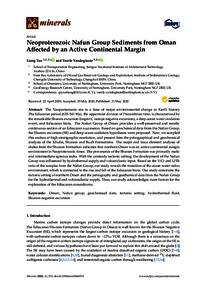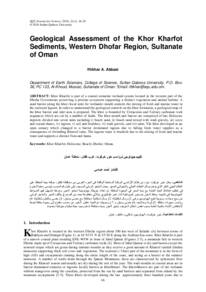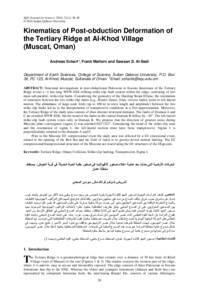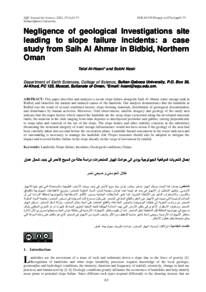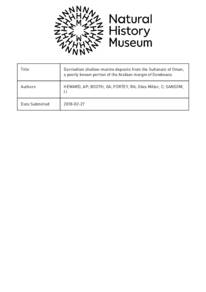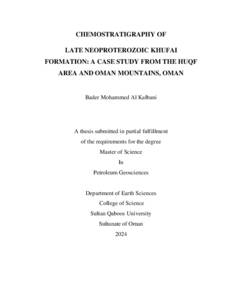وثيقة
Neoproterozoic nafun group sediments from Oman affected by an active continental margin.
المعرف
DOI: 10.3390/min10060511
المصدر
Minerals. v. 10, 6, 511
المساهمون
Vandeginste, Veerle., مؤلف
الدولة
Switzerland
الناشر
MDPI AG.
ميلادي
2020-06-01
اللغة
الأنجليزية
الملخص الإنجليزي
The Neoproterozoic era is a time of major environmental change in Earth history. The Ediacaran period (635–541 Ma), the uppermost division of Precambrian time, is characterized by the remarkable Shuram excursion (largest C isotope negative excursion), a deep ocean water oxidation event, and Ediacaran biota. The Nafun Group of Oman provides a well-preserved and mostly continuous section of an Ediacaran succession. Based on geochemical data from the Nafun Group, the Shuram excursion (SE) and deep ocean oxidation hypotheses were proposed. Now, we sampled this section at high stratigraphic resolution, and present here the petrographical and geochemical analysis of the Khufai, Shuram and Buah Formations. The major and trace element analysis of shales from the Shuram Formation indicates that northern Oman was an active continental margin environment in Neoproterozoic times. The provenance of the Shuram Formation was primarily mafic and intermediate igneous rocks. With the unsteady tectonic setting, the development of the Nafun Group was influenced by hydrothermal supply and volcaniclastic input. Based on the V/Cr and U/Th ratio of the samples from the Nafun Group, our study reveals the transition of the ocean water redox environment, which is connected to the rise and fall of the Ediacaran biota. Our study constrains the tectonic setting of northern Oman and the petrography and geochemical data from the Nafun Group for the hydrothermal and volcaniclastic supply. Thus, our study acknowledges more factors for the explanation of the Ediacaran conundrums.
ISSN
2075-163X
URL المصدر
قالب العنصر
مقالات الدوريات

